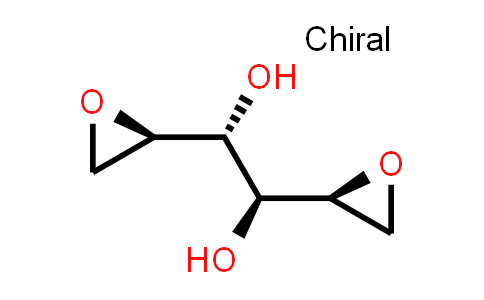VAL-083
VAL-083 is a bi-functional alkylating agent, with potential antineoplastic activity. Upon administration, VAL-083 crosses the blood brain barrier (BBB) and appears to be selective for tumor cells. This agent alkylates and crosslinks DNA which ultimately leads to a reduction in cancer cell proliferation. In addition, VAL-083 does not show cross-resistance to other conventional chemotherapeutic agents and has a long half-life in the brain.
About VAL-083
VAL-083 represents a "first-in-class" small molecule chemotherapeutic, which means that the molecular structure of VAL-083 is not an analogue or derivative of other small molecule chemotherapeutics approved for the treatment of cancer.
VAL-083 has been assessed in 42 Phase 1 and Phase 2 clinical trials sponsored by the U.S. National Cancer Institute ("NCI") as a treatment against various cancers. Published pre-clinical and clinical data suggest that VAL-083 may be active against a range of tumor types, including lung, brain, cervical, ovarian tumors and hematologic (blood) cancers.
VAL-083 is approved as a cancer chemotherapeutic in China for the treatment of chronic myelogenous leukemia ("CML") and lung cancer. VAL-083 has not been approved for any indication outside of China.
For research use only. We do not sell to patients.
Chemical Information
| Name | VAL-083 |
|---|---|
| Iupac Chemical Name | (1R,2S)-1-((R)-oxiran-2-yl)-2-((S)-oxiran-2-yl)ethane-1,2-diol |
| Synonyms | VAL083; VAL083; VAL083; Dianhydrodulcitol; Dianhydrogalactitol; Dulcitol Diepoxide; |
| Molecular Formula | C6H10O4 |
| Molecular Weight | 146.14 |
| Smile | O1[C@H](C1)[C@@H]([C@H](O)[C@H]1OC1)O |
| InChiKey | AAFJXZWCNVJTMK-GUCUJZIJSA-N |
| InChi | InChI=1S/C6H10O4/c7-5(3-1-9-3)6(8)4-2-10-4/h3-8H,1-2H2/t3-,4+,5+,6- |
| CAS Number | 23261-20-3 |
| Related CAS |
Ordering Information
| Packaging | Price | Availability | Purity | Shipping Time |
|---|---|---|---|---|
| Bulk | Enquiry | Enquiry | Enquiry |
| Formulation | Off-white solid to white solid |
|---|---|
| Purity | 98% Min. |
| Storage | Dry, dark and at 0 - 4 C for short term (days to weeks) or -20 C for long term (months to years). |
| Solubility | Soluble in DMSO, not in water |
| Handling | |
| Shipping Condition | Shipped under ambient temperature |
| HS Code |
| Targets | |
|---|---|
| Mechanism | |
| Cell study | |
| Animal study | |
| Clinical study |
[1]. Kaiji Hu, et al. Abstract 811: VAL083, a novel N7 alkylating agent, surpasses temozolomide activity and inhibits cancer stem cells providing a new potential treatment option for glioblastoma multiforme. Cancer Research. 2012 Mar 31-Apr 4.
[2]. Jiang X, et al. Dianhydrogalactitol, a potential multitarget agent, inhibits glioblastoma migration, invasion, and angiogenesis. Biomed Pharmacother. 2017 Jul;91:1065-1074.
[3]. Peng C, et al. 1,2:5,6-dianhydrogalactitol inhibits human glioma cell growth in vivo and in vitro by arresting the cell cycle at G2/M phase. Acta Pharmacol Sin. 2017 Apr;38(4):561-570.
[4]. Szende B, Jeney A, Institoris L. The diverse modification of N-butyl-N-(4-hydroxybutyl) nitrosamine induced carcinogenesis in urinary bladder by dibromodulcitol and dianhydrodulcitol. Acta Morphol Hung. 1992;40(1-4):187-93. PubMed PMID: 1365762.
[5]. Anderlik P, Szeri I, Bános Z. Bacterial translocation in dianhydrodulcitol-treated mice. Acta Microbiol Hung. 1988;35(1):49-54. PubMed PMID: 3293340.
[6]. Huang ZG. [Clinical observation of 15 cases of chronic myelogenous leukemia treated with 1,2,5,6-dianhydrodulcitol]. Zhonghua Nei Ke Za Zhi. 1982 Jun;21(6):356-8. Chinese. PubMed PMID: 6957285.
[7]. Anderlik P, Szeri I, Bános Z, Wessely M, Radnai B. Higher resistance of germfree mice to dianhydrodulcitol, a lymphotropic cytostatic agent. Acta Microbiol Acad Sci Hung. 1982;29(1):33-40. PubMed PMID: 6211912.
[8]. Bános Z, Szeri I, Anderlik P. Effect of Bordetella pertussis vaccine on the course of lymphocytic choriomeningitis (LCM) virus infection in suckling mice pretreated with dianhydrodulcitol (DAD). Acta Microbiol Acad Sci Hung. 1979;26(2):121-5. PubMed PMID: 539467.
[9]. Bános Z, Szeri I, Anderlik P. Dianhydrodulcitol treatment of lymphocytic choriomeningitis virus infection in suckling mice. Acta Microbiol Acad Sci Hung. 1979;26(1):29-34. PubMed PMID: 484266.
[10]. Gerö-Ferencz E, Tóth K, Somfai-Relle S, Gál F. Effect of dianhydrodulcitol (DAD) on the primary immune response of normal and tumor bearing rats. Oncology. 1977;34(4):150-2. PubMed PMID: 335301.
[11]. Kopper L, Lapis K, Institóris L. Incorporation of 3H-dibromodulcitol and 3H-dianhydrodulcitol into ascites tumor cells. Autoradiographic study. Neoplasma. 1976;23(1):47-52. PubMed PMID: 1272473.
[12]. Bános S, Szeri I, Anderlik P. Combined phytohaemagglutinin and dianhydrodulcitol treatment of lymphocytic choriomeningitis virus infection in mice. Acta Microbiol Acad Sci Hung. 1975;22(3):237-40. PubMed PMID: 1155228.
Chemical Structure

